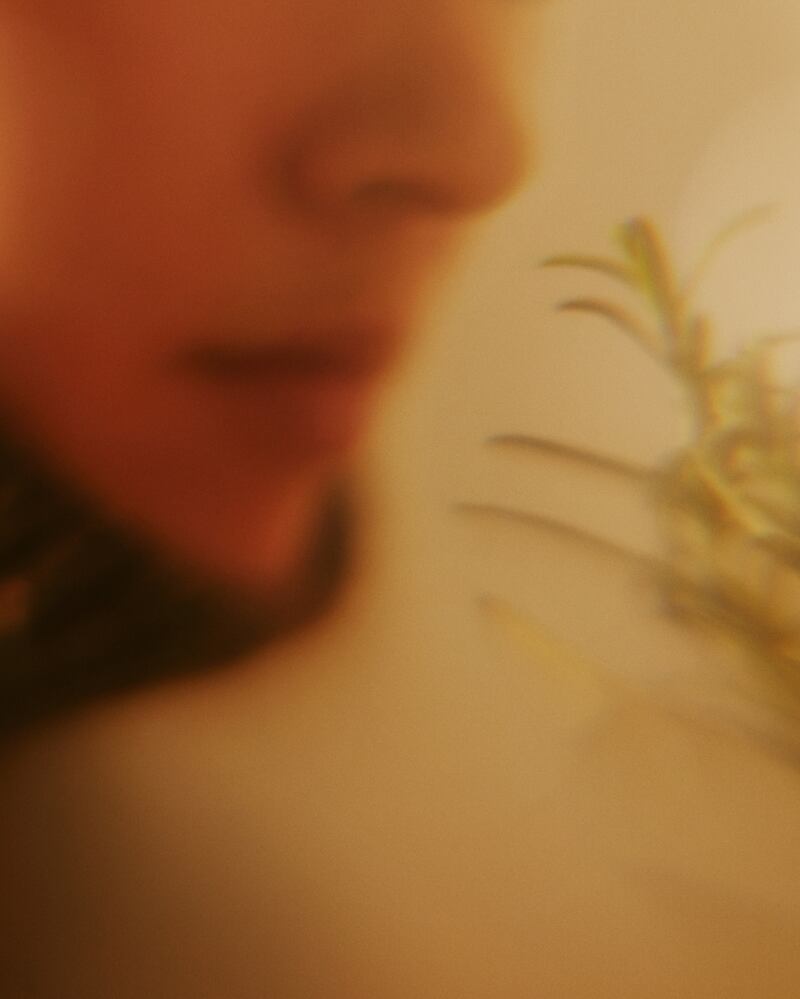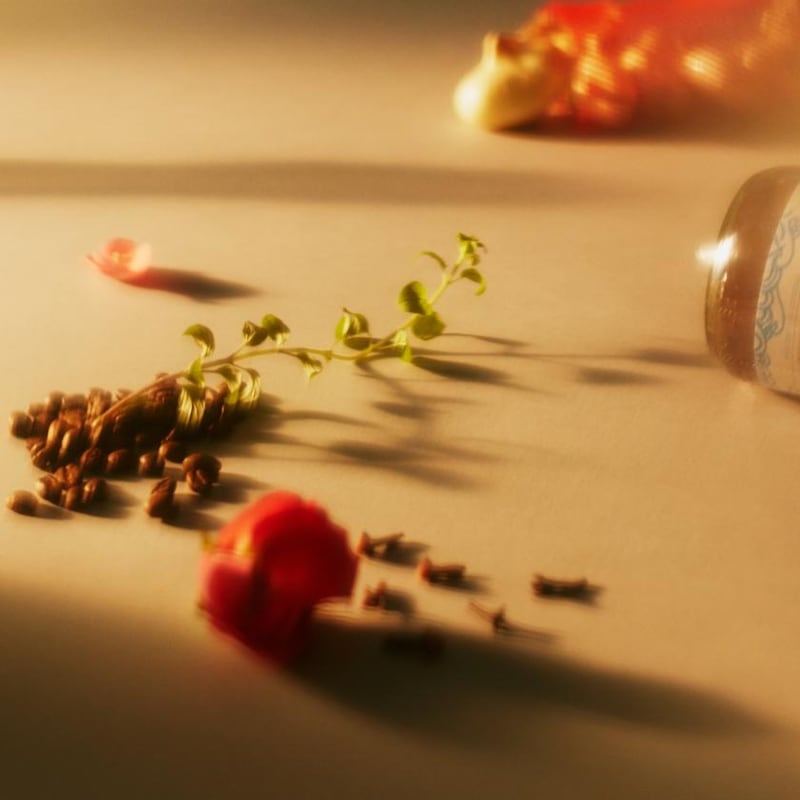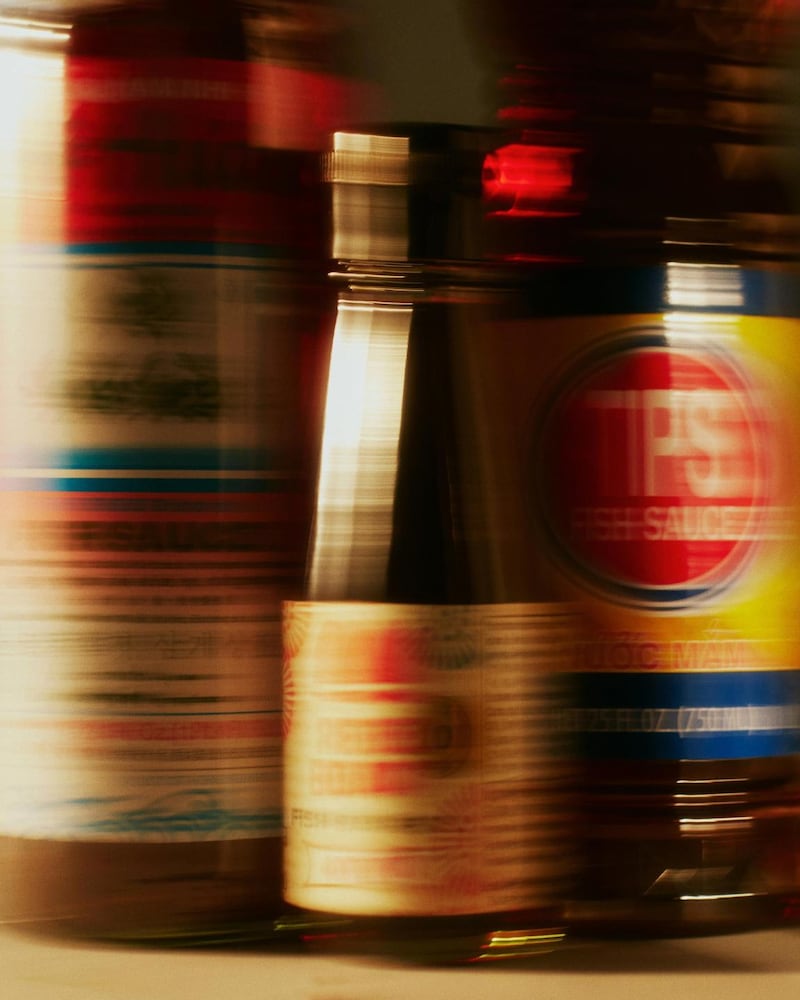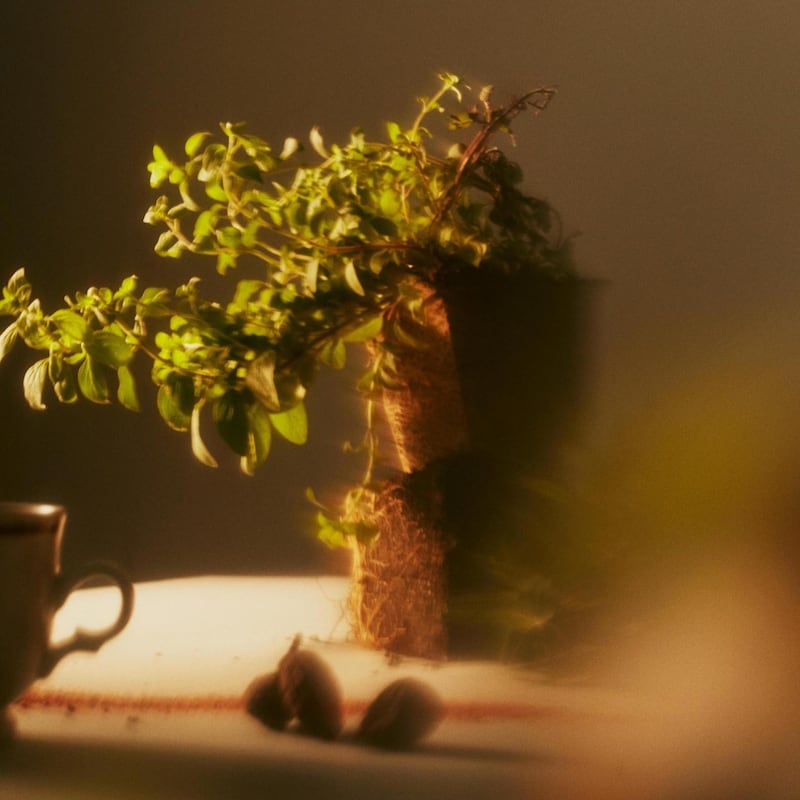Back in Jamaica, when Trudy-Ann Lalor and her siblings caught a cold, their mother burned Seville oranges over a fire in the backyard, cut the charred peel away and gave them the hot, juicy pulp with sugar, to eat with a spoon.
It always made them feel better. Maybe it was the comforting aroma of the citrus, the deliciousness and warmth of the fruit, the dose of vitamin C. Maybe it was the sweetness of the attention itself – the fact that someone loved you so much she took the time to prepare you an orange in this elaborate way.
The family never had to explain any of this to anyone, until this past December, when Lalor’s 23-year-old son, Kemar Lalor, put a how-to video for the remedy on TikTok, assuring people that it would fix a diminished sense of taste.
So much of what we think of as taste is in fact smell. Without information from our 400 smell receptors, which can detect many millions of smells, food flattens out
Smell and taste are intimately connected, and the video quickly went viral, as millions of strangers started burning oranges on the open flames of their gas stoves. Some were thrilled. They called it a miracle. Others laughed it off, calling it a useless joke. Many left angry comments when the orange didn’t work as advertised, though Lalor attributed that to poor execution – not burning the outside of the citrus thoroughly, not eating the pulp while it was still hot, not adding enough sugar.
I found the orange remedy a kind of pleasant exercise, a fun distraction. But it didn’t magically give me back what I’d lost after I got Covid-19 in December. After my sense of smell disappeared, I became depressed and disoriented as all of the foods I loved became unrecognisable, turning into a series of unappealing textures.
So much of what we think of as taste is in fact smell – volatile molecules coming through the retronasal pathway, filling out all the details of a strawberry beyond its basic sweetness and acidity, expanding on its pleasures. Without information from our 400 smell receptors, which can detect many millions of smells, food flattens out. It makes life rather difficult if, like me, you’re a restaurant critic.
When I called up Kemar Lalor, he was packing up goat curry and roti to go at Big G’s 241 Jerk Chicken, the Jamaican restaurant his family runs in Etobicoke, Ontario. I told him I was still struggling on some days, that the healing process was weird and nonlinear, that I’d tried the orange remedy but nothing had been restored overnight. He was sympathetic, but held firm.
“Try it again,” Lalor said. It had worked for his mother and for him, he explained, though he added that they were never tested for Covid-19, so he couldn’t be sure if that’s what they’d had. “Keep trying it every day!”

While some people experience smell loss as they age, or after a head injury or viral infection, for most people it happens temporarily, when volatile molecules floating through the air can’t get into their olfactory receptor areas – a stuffy nose, in other words.
But during the pandemic, millions of people lost their sense of smell in an instant. "It was just like a light bulb got turned off," said Dr Pamela Dalton, a research scientist at the Monell Chemical Senses Centre, in Philadelphia. "One moment they could smell, and the next moment, nothing smelled."
I noted that moment as it happened to me, stepping into the shower at my home in Los Angeles. At first, I mistook the lack of aromas for a new smell, a curious smell I couldn’t identify – was it the water itself? the stone tiles? – before realising it was just a blank, a cushion of space between me and my world.
Though there’s no “on” switch to bring back olfaction, Lalor’s advice to keep trying, to try every day, was correct. Scientists agree that there’s no cure for anosmia, but they also agree that the daily, repetitive sniffing of a few aromas can be useful, working as a kind of therapy for an injured nose and brain.
The general technique is known as smell training, and for millions of people with anosmia, it’s become as routine as brushing their teeth before bed, or grinding coffee beans in the morning.
“It’s the one type of post-viral olfactory dysfunction therapy that’s been shown to have some positive effect,” says Dalton, who strongly encouraged daily conditioning, but also warned, “You’ll get bored.”
I'm not sure how to remember all the tiny, wonderful moments from my life without their smells to anchor me
A typical smell kit might consist of four essential oils, though you could use a charred orange or any specific aromas with emotional value to you. The second I lost my sense of smell, I turned to the kitchen, opening jars of whole spices, shoving my face into bunches of fresh herbs, hovering over the open cap of fish-sauce bottles.
For three weeks, I sniffed things constantly, things I loved, but couldn’t pick up anything at all. When I smelled something for the first time again, it was so unpleasant, it made me gag: the stomach-churning reek of spoiled milk.
Whether you realise it or not, your nose is constantly alerting you to potential danger that’s out of sight – smoke, gas leaks, chemicals in the air, spoiled foods, sewage. Bad smells are good, in the sense that they’re full of vital information about your surroundings that help keep you well.
“Even though the olfactory system can tell us where there are good food sources and safe places, it’s ultimately a danger sense,” says Dalton, who wasn’t surprised that a whiff of spoiled milk was my reintroduction to olfaction, and even encouraged adding “bad” smells to my training. “It’s a warning system.”
On the other hand, some smells are vital to quality of life, to accessing memories and emotions, to feeling close to people, to connecting with nature.
I think of the sweet smell of my nephew’s head when he was a baby; of my parents’ home when there’s a lasagna in the oven; of hot, dry sagebrush when my dogs kick up the scent. I think of the smell of French fries mixing with wafts of chlorine on a summer’s day by the pool, and I’m not sure how to remember these tiny, wonderful moments without their smells to anchor me.

"Loss of smell is very much a loss of pleasure," says Chrissi Kelly, the founder of AbScent, a nonprofit group for people with anosmia in the United Kingdom.
When Kelly lost her sense of smell after a viral infection in 2012, no one recommended smell training as a possible therapy. But she read scientific research, including a paper by Thomas Hummel about how repeated, structured exposure to smells could increase one's sensitivity.
She taught herself the technique. And then, she taught others.
For many Covid-19 survivors with anosmia, Kelly has become a kind of mentor, creating a tight community online, walking newly anosmic people through training sessions and cheerleading them, without setting unreasonable expectations. Anosmia presents differently for everyone, and there’s no fixed timeline for smell training.
“I never use the word recovery, because I think it’s misleading,” she tells me, when I asked about my own recovery. “Smell loss is an injury. You recover from an illness, but an injury might leave you with some lasting scarring.”
The process of sitting down and sniffing – concentrating quietly on registering aromas, or fragments of aromas – is lonely, tedious and mentally exhausting
Smell training isn’t magic, but it’s a way to possibly form new neural pathways, to slowly reorient yourself if you’re feeling lost.
Before speaking with Kelly, I’d imagined smell training to the theme song of “Rocky.” I’d zip up my shiny tracksuit and jog in place in front of various ingredients, identifying them correctly one by one as strangers gave me a thumbs up. Sesame oil! Black peppercorns! Marjoram! It was a jaunty montage, and a total fantasy.
In fact, the process of sitting down and sniffing – concentrating quietly on registering aromas, or fragments of aromas – is lonely, tedious and mentally exhausting.
For newcomers to smell training, Kelly suggests starting with bunny sniffs, or “tiny little sniffs that bring the air right up to the olfactory cleft.”
Over FaceTime, she led me through a session of “mindful smelling,” while I held a jar of cloves under my nose and took quick bunny sniffs, ready to share my thoughts with her. “Okay, so don’t judge yet,” Kelly instructed, before I could say the cloves seemed muffled, as if I were listening to them through a glass pressed to the wall.

“With people who have lost their sense of smell, I think it takes a longer time for the receptors to work and to feed that into the brain,” she explained. “So just make sure that you’re patient, and just keep listening.”
It’s impossible to talk about smelling without resorting to analogies and metaphors, and “listening” is one that comes up a lot.
Recognising a smell when you’re in training can feel a lot like picking up a fragment of a familiar song from a passing car, hooking onto the short sequence of notes you recognized, and having the name of it just on the tip of your tongue.
A few seconds later, and you remember it was from the summer of 2015. You heard it that one night, sitting on your friend’s stoop. You sang it at karaoke, at least once. Ugh, what was it again?
With my next scent, the cardamom pods, Kelly asked me to imagine looking into a deep well. So deep that when you drop a stone into it, you don’t know when it’ll hit the bottom.
“You’re straining your ears to hear the sound of the stone hitting the surface of the water, and that’s what I want you to do now, imagine that you are waiting and waiting and waiting.”
As I waited, I received some small, fragments of messages from the cardamom – something floral, something mellow but almost menthol, something like the freshness of sun-warmed citrus. It came in pieces, like a series of clues, but then I smelled the cardamom clearly, completely.
“So much about smell training is about giving people confidence,” Kelly says.

Every single aroma I could detect again was more precious, intense and illuminating, even my dog’s fishy breath. Although it hadn’t been more than a few weeks, I considered ending daily conditioning altogether when I could smell the foods that I was eating and cooking faster, and with more precision – the comforting tickle of garlic hitting the oil, the cinnamon-eucalyptus of fresh curry leaves, crumpled up in my fingers.
But some days, my sense of smell is distorted and everything in my orbit smells wrong — of day-old cigarette stubs, heavy and chemical. Some days, the vividness of what I’ve recovered is muted, or slower and harder to access.
Smell training doesn't end when you start to pick up a few smells again. It begins. – New York Times
Tejal Rao is a restaurant critic for the New York Times. She has won two James Beard Foundation awards for her restaurant criticism











